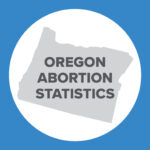Primer: The Basic Biochemistry of Abortion Pill Reversal

By Milly McGee
This is Issue 16 of CLI’s On Science Series.
Executive Summary:
- Natural progesterone has been safely and effectively used to support female reproductive health since the 1950s.
- Abortion pill reversal uses natural progesterone to counter the abortion drug, mifepristone, and sustain a pregnancy.
- The American College of Obstetricians and Gynecologists (ACOG) erroneously claimed that abortion pill reversal has no scientific support, but a 2018 study found that around 66% of participants who used the most effective regimens to reverse a drug-induced abortion had continuing pregnancies.
Introduction
This primer lays out the science behind Abortion Pill Reversal (“APR”) by examining the function of progesterone as a naturally occurring hormone in the female reproductive system, the functions of mifepristone and misoprostol as drugs used in drug-induced abortion, the basic biochemical principle of competitive inhibition, and the disinformation surrounding the role of progesterone in reversing the abortion drug.
Progesterone: An Essential Pregnancy Hormone
Progesterone is a naturally occurring hormone that plays a central role in the female reproductive system. Progesterone is produced primarily in the woman’s ovary, after egg release, to prepare the lining of the womb (endometrium) for the embryo to implant. Progesterone is primarily responsible for the thickening of the uterine lining (the endometrium) to sustain an embryo. If implantation does not occur on a given cycle, progesterone levels will drop, and the uterine lining is shed (menstruation). However, if an embryo does implant into the endometrium, progesterone will continue to be produced for the duration of the pregnancy, playing an important role in providing nutrients for the developing embryo and preventing uterine contractions that could cause the developing embryo to be expelled. Progesterone also helps stimulate mammary glands for lactation after birth.[1]
Natural (bioidentical) progesterone has been used to support female reproductive health since the 1950s. It is used to treat secondary amenorrhea (irregular periods), to prevent endometrial thickening (such as in endometriosis), to support lactation and thyroid function, has historically been used to prevent preterm birth, and more.[2] It has a wide record of safety and efficacy.[3]
While natural (bioidentical) progesterone shares the exact biochemical structure of naturally occurring progesterone within the body, there is another class of progesterone mimics, known as progestins, that are similar (but not bioidentical) to naturally occurring progesterone. The structural similarity between progestins and progesterone allows for their use in combined oral contraceptives (COC’s) and hormonal replacement medications, along with a variety of other female reproductive medications.[4]
Abortion Drug Regimen: Mifepristone and Misoprostol
The first progesterone-blocking drug to receive FDA approval in a class of drugs developed in the 1980s called “selective progesterone receptor modulators” was RU-486 (generic name: mifepristone, trade name: Mifeprex). RU-486 was approved in 2000 to cause abortion. Drug-induced abortion usually uses a combination of two drugs – mifepristone and misoprostol – to terminate a pregnancy.[5] Mifepristone is a “competitive inhibitor” or a “progesterone receptor antagonist,” meaning it works by binding to progesterone receptors (intended for natural progesterone binding) in the uterus to prevent progesterone from binding, thus preventing the typical pregnancy-supporting action of progesterone.[6] In the same way that a drop in progesterone levels following ovulation without an implanted embryo causes the monthly shedding of the uterine lining, the prevention of progesterone binding to its receptor by the action of mifepristone causes the endometrium to break down.[7] Subsequent ingestion of misoprostol ensures that the embryo detaches and dies. Notably, mifepristone does not have a similar effect on a pregnancy implanted outside of the uterus, demonstrating the urgent need to rule out an ectopic pregnancy prior to using mifepristone, as an embryo implanted in a fallopian tube may continue to grow, threatening a mother’s life from tubal rupture and catastrophic hemorrhage.[8]
The second drug in the regimen, misoprostol, is supposed to be taken 24 to 48 hours after mifepristone ingestion. Misoprostol is a “prostaglandin E1 (PGE1) analogue,” meaning it mimics the action of naturally occurring hormone-like substances called prostaglandins in the body. In the uterus, prostaglandins promote the biophysical changes necessary for cervical ripening and the onset of labor. Prostaglandins are naturally produced by the pressure of the fetal head on the cervix, an indication labor is ready to begin.[9] In cases of prolonged pregnancy, for example, prostaglandins can be used to induce labor.[10] As a mimic of PGE1, misoprostol also softens the opening of the womb, making it easier to open, and causes the womb to contract. Because misoprostol can cause uterine contractions, misoprostol has also been used to stimulate labor when pregnancy is prolonged and to stop bleeding after delivery. Therefore, the use of misoprostol in drug-induced abortions induces unnaturally premature softening of the cervix and expulsion of the embryo.[11]
How Abortion Pill Reversal Works
A foundational principle of biochemistry is enzyme-substrate interaction. For any entity to sustain life, substrates (mediums in which reactions take place or, in other words, an ingredient in a reaction) must interact with enzymes (substances, typically proteins, which use substrates to produce a chemical reaction) constantly. To provide an image, consider a key opening a locked door. Only when the key (the substrate) joins with the lock (the enzyme) can the door be unlocked (a reaction takes place).
In pregnancy, an abundance of enzyme-substrate reactions take place to sustain and nurture a developing embryo. As previously mentioned, a central substrate in this process is progesterone. It is the interaction between progesterone and its receptors in the uterus that allows for the thickening of the endometrium, the sustenance of the embryo, the prevention of uterine contraction, and the eventual stimulation of mammary glands. Mifepristone, aptly named a “competitive inhibitor,” works by competing with progesterone to bind to the progesterone receptors to prevent catalysis (that is, the reaction that occurs between progesterone and the receptor to bring about its effects in the body).
Abortion pill reversal is the use of natural progesterone to overcome the effects of mifepristone blockage of progesterone receptors. This is a straightforward application of the simple principle of competitive inhibition. The phenomenon of competitive inhibition is described in Lehninger Principles of Biochemistry as follows:
Many competitive inhibitors are compounds that resemble the substrate and combine with the enzyme to form [a] … complex, but without leading to catalysis. Even fleeting combinations of this type will reduce the efficiency of the enzyme … Because the inhibitor binds reversibly to the enzyme, the competition can be biased to favor the substrate simply by adding more substrate. When [S] far exceeds [I], the probability that an inhibitor molecule will bind to the enzyme is minimized and the reaction exhibits a normal Vmax.[12] (Emphasis added; [S]= concentration of substrate, [I] = concentration of competitive inhibitor, Vmax = maximum initial rate of the catalyzed reaction).
In basic terms, when a competitive inhibitor (mifepristone) is added to a normal reaction, it will bind reversibly to the enzyme and prevent the substrate (natural progesterone) from binding to the same enzyme. However, if a significant amount of substrate (bioidentical progesterone) is added, it can outnumber and outcompete the inhibitor to allow for normal interaction between the substrate and the enzyme to complete the normal reaction. In this case, the “normal reaction” is sustaining pregnancy and keeping the baby alive.
This principle of overcrowding receptors with a substrate to counteract the effects of a receptor antagonist is not novel. When a patient presents to the hospital with carbon monoxide poisoning, high flow oxygen is the prescribed treatment. Despite carbon monoxide binding to hemoglobin (the oxygen/carbon dioxide transport molecule) with an affinity 230-300 times greater than that of oxygen, the high levels of oxygen provided by the treatment allow for oxygen to outcompete the carbon monoxide for the hemoglobin to restore the patient to normal oxygen-carrying capacity.[13], [14] The same principle is what allows for the successful reversal of opioid overdose by Narcan/naloxone.[15]
This basic principle underlies the science of abortion pill reversal. The treatment to reverse the abortion drug is simply administration of high-dose progesterone (orally, vaginally, or via intramuscular injection). Exogenous progesterone should be administered ideally within 24 to 72 hours after taking mifepristone but before taking misoprostol, and typically for the remainder of the first trimester.[16] As the biochemical principle states, if the concentration of progesterone far exceeds the concentration of the mifepristone, the probability of mifepristone binding to each receptor is minimized and the normal progesterone-progesterone receptor interaction can take place to continue sustaining the pregnancy. Mifepristone has competitive reversible binding to the progesterone receptor, so despite mifepristone binding more tightly to the progesterone receptor than progesterone, sufficient progesterone will “kick the mifepristone off” of the progesterone receptor in exactly the same way oxygen “kicks carbon monoxide off” of the oxygen receptor in high flow oxygen treatment.
Drs. George Delgado, Matt Harrison, and Mary Davenport have conducted studies providing evidence for the efficacy of abortion pill reversal. The most notable study in 2018 found that when following 754 patients who decided to attempt to reverse a drug-induced abortion, around 66% had continuing pregnancies when using the most effective regimens of intramuscular progesterone and high-dose oral progesterone within 72 hours of taking mifepristone. In women who had reversals as well as subsequent follow-up after delivery, there were seven reported birth defects. The associated rate, 2.7%, is equal to the birth defect rate among the general population, which is approximately 3%. There thus appears to be no increased risk of birth defects, according to Delgado, for babies born after mifepristone reversal.[17]
To control for any reversals that may have happened without progesterone usage, Davenport et al. conducted a literature review in 2017 of pregnancies that used mifepristone as a single agent (rather than the dual action of mifepristone and misoprostol in a “completed” drug-induced abortion regimen). The results showed that less than 25% of pregnancies continued to term when only mifepristone was taken, indicating a statistically significant difference from the 66% of continuing pregnancies when progesterone treatment was used.[18]
Ideologically Driven Opposition
Even though the science behind the action of reversing competitive inhibitors is both basic and undisputed, the American College of Obstetricians and Gynecologists (ACOG) claims in error that abortion pill reversal has no scientific support. A search of “abortion pill reversal” on ACOG’s website leads to an article (which notably falls under their “Advocacy” section rather than their “Clinical Information” section) called, “Facts are Important: Medication Abortion ‘Reversal’ Is Not Supported by Science.”
Their argument is that abortion pill reversal has had “no ethics approval, no control group, under-reporting of data, and no reported safety outcomes.”[19] The American Association of Pro-Life Obstetricians and Gynecologists proves that this claim is blatantly false.[20]
Two studies by George Delgado et al., one from 2012 (referenced directly by ACOG) and one from 2018, for example, are retrospective chart reviews, which are generally exempt from institutional review board (IRB) approval.[21], [22] Additionally, the aforementioned 2018 Delgado et al. study on mifepristone reversal, absent from ACOG’s advocacy sheet, did undergo IRB review and received IRB exemption. Also, the 2018 study did in fact use a historical control group, which is routine for studies in which a placebo would be unethical, which would be the case if study participants desire to reverse an abortion but are instead given a placebo. The Delgado studies also include important safety-related data concerning preterm delivery and birth defects, both of which were not statistically significant in comparison to births in the general population.
In ACOG’s article attacking abortion pill reversal, it links to its Practice Bulletin 225, which claims “there is no evidence that treatment with progesterone after taking mifepristone increases the likelihood of the pregnancy continuing.”[23] It appears, however, that ACOG may not actually stand by this statement. Included later in the same practice bulletin is guidance for contraceptive initiation after drug-induced abortion. There, ACOG warns that initiation of DMPA (a progestin-only hormonal birth control that mimics the action of progesterone) “may increase the risk of ongoing pregnancy” despite mifepristone administration. It seems that ACOG does understand and admit the scientific evidence behind abortion pill reversal, but only when it conveniently supports its ideological convictions.
Mitchell Creinin, co-author of ACOG Practice Bulletin 225, conducted a study in 2019 with four other researchers to disprove the safety and efficacy of abortion pill reversal. The study intended to enroll 40 women seeking abortion in a trial to receive mifepristone prior to their scheduled surgical abortions. They were then randomly assigned to receive either progesterone or placebo. Enrollment was stopped early after only 12 patients had entered the study, two of whom voluntarily discontinued after mifepristone administration due to symptoms of nausea, vomiting, or bleeding. Of the remaining 10 women, five received progesterone and five received placebo. The study was terminated prematurely due to severe hemorrhage in 25% (three out of 12) of the patients. Of these three women, one was in the progesterone group and two were in the placebo group. Both women on placebo (no reversal attempted with progesterone) required emergency suction aspiration, but the woman on progesterone’s condition resolved without additional intervention.[24] While some who are ideologically motivated might misinterpret this study to imply that any attempt to reverse the abortion drug will be harmful to the mother, the study instead proves that it is the abortion drug itself that is harmful, supporting the known fact that mifepristone can cause serious and even fatal complications. Moreover, in the study, a fetal heartbeat was detected in 80% (four out of five) of women following attempted reversal of abortion with progesterone.[25] An actual assessment of the Creinin study therefore indicates that mifepristone itself is harmful and progesterone usage for reversal is both safe and efficacious.
Summary
Progesterone comes from the Latin pro + gestare, literally to support the carrying of something. Indeed, in its role of supporting a mother in carrying the life of her child, one might say that progesterone is a “pro”-life hormone. Unfortunately, ACOG, due its ideological bias against the value of nascent human life, refuses to acknowledge the scientific basis for the use of this hormone in preserving pregnancies threatened by abortion drugs. The basic science shows that progesterone counteracts the action of mifepristone in abortion pill reversal. Numerous studies have supported this simple principle. ACOG is right, facts are important. And the fact is, abortion pill reversal is supported by science.
Milly McGee is the former 2022 and 2024 research fellow for the Charlotte Lozier Institute.
[1] Jessie K. Cable and Michael H. Grider, “Physiology, Progesterone,” StatPearls, 2023, http://www.ncbi.nlm.nih.gov/books/NBK558960/.
[2] Gian Carlo Di Renzo, Valentina Tosto, and Valentina Tsibizova, “Progesterone: History, Facts, and Artifacts,” Best Practice & Research. Clinical Obstetrics & Gynaecology 69 (November 2020): 2–12, https://doi.org/10.1016/j.bpobgyn.2020.07.012.
[3] Nathalie V. Goletiani, Diana R. Keith, and Sara J. Gorsky, “Progesterone: Review of Safety for Clinical Studies,” Experimental and Clinical Psychopharmacology 15, no. 5 (2007): 427–44, https://doi.org/10.1037/1064-1297.15.5.427.
[4] Michael Edwards and Ahmet S. Can, “Progestin,” StatPearls, March 11, 2023, http://www.ncbi.nlm.nih.gov/books/NBK563211/.
[5] “Medication Abortion: Your Questions Answered,” Yale Medicine, September 11, 2023, https://www.yalemedicine.org/news/medication-abortion-your-questions-answered.
[6] “Drug-Receptor Interaction: Antagonist | Pharmacology | JoVE,” JoVE, accessed January 3, 2024, https://www.jove.com/science-education/14433/drug-receptor-interaction-antagonist.
[7] Megha Satyanarayana and Mesa Schumacher, “How Medication Abortion with RU-486/Mifepristone Works,” Scientific American, September 1, 2022, https://www.scientificamerican.com/article/how-medication-abortion-with-ru-486-mifepristone-works/.
[8] Ingrid Skop, “The ‘No-Test Medication Abortion’ Protocol: Experimenting with Women’s Health,” Lozier Institute, July 30, 2020, https://lozierinstitute.org/the-no-test-medication-abortion-protocol-experimenting-with-womens-health/.
[9] David Williams, Anna Kenyon, and Dawn Adamson, “Chapter Ten – Physiology,” in Basic Science in Obstetrics and Gynaecology (Fourth Edition), ed. Phillip Bennett and Catherine Williamson (Churchill Livingstone, 2010), 173–230, https://doi.org/10.1016/B978-0-443-10281-3.00014-2.
[10] Zarko Alfirevic et al., “Introduction,” in Which Method Is Best for the Induction of Labour? A Systematic Review, Network Meta-Analysis and Cost-Effectiveness Analysis (NIHR Journals Library, 2016), https://www.ncbi.nlm.nih.gov/books/NBK379826/.
[11] Satyanarayana and Schumacher, “How Medication Abortion with RU-486/Mifepristone Works.”
[12] David L. Nelson and Michael M. Cox, Lehninger Principles of Biochemistry, Sixth edition (New York: W.H. Freeman, 2012), 207–8.
[13] Lars Eichhorn, Marcus Thudium, and Björn Jüttner, “The Diagnosis and Treatment of Carbon Monoxide Poisoning,” Deutsches Arzteblatt International 115, no. 51–52 (December 24, 2018): 863–70, https://doi.org/10.3238/arztebl.2018.0863.
[14] Jason J. Rose et al., “Carbon Monoxide Poisoning: Pathogenesis, Management, and Future Directions of Therapy,” American Journal of Respiratory and Critical Care Medicine 195, no. 5 (March 1, 2017): 596–606, doi: 10.1164/rccm.201606-1275CI
[15] Jonathan Theriot, Sarah Sabir, and Mohammadreza Azadfard, “Opioid Antagonists,” StatPearls, 2024, http://www.ncbi.nlm.nih.gov/books/NBK537079/.
[16] “Frequently Asked Questions,” Abortion Pill Reversal, accessed January 3, 2024, https://abortionpillreversal.com/abortion-pill-reversal/faq.
[17] George Delgado et al., “A Case Series Detailing the Successful Reversal of the Effects of Mifepristone Using Progesterone,” Issues in Law & Medicine 33, no. 1 (2018): 21–31.
[18] Mary Davenport et al., “Embryo Survival after Mifepristone: A Systematic Review of the Literature,” Issues in Law & Medicine 32, no. 1 (2017): 3–18.
[19] “Facts Are Important: Medication Abortion ‘Reversal’ Is Not Supported by Science,” ACOG, accessed January 3, 2024, https://www.acog.org/advocacy/facts-are-important/medication-abortion-reversal-is-not-supported-by-science.
[20] AAPLOG, “Responding to ACOG’s Unscientific Statement on Progesterone Rescue Therapy after Mifepristone Ingestion,” AAPLOG, May 30, 2023.
[21] Delgado et al., “A Case Series Detailing the Successful Reversal of the Effects of Mifepristone Using Progesterone.”
[22] George Delgado and Mary L. Davenport, “Progesterone Use to Reverse the Effects of Mifepristone,” The Annals of Pharmacotherapy 46, no. 12 (December 2012): e36, https://doi.org/10.1345/aph.1R252.
[23] ACOG, “Medication Abortion Up to 70 Days of Gestation,” Practice Bulletin, no. 225 (October 2020), https://www.acog.org/clinical/clinical-guidance/practice-bulletin/articles/2020/10/medication-abortion-up-to-70-days-of-gestation.
[24] Mitchell D. Creinin et al., “Mifepristone Antagonization With Progesterone to Prevent Medical Abortion: A Randomized Controlled Trial,” Obstetrics & Gynecology 135, no. 1 (January 2020): 158–65, https://doi.org/10.1097/AOG.0000000000003620.
[25] Charlotte Lozier Institute, “CLI Responds to Halting of Abortion Pill Trial,” December 6, 2019, https://lozierinstitute.org/cli-responds-to-halting-of-abortion-pill-trial.
https://www.acog.org/clinical/clinical-guidance/committee-opinion/articles/2020/12/increasing-access-to-abortion

























